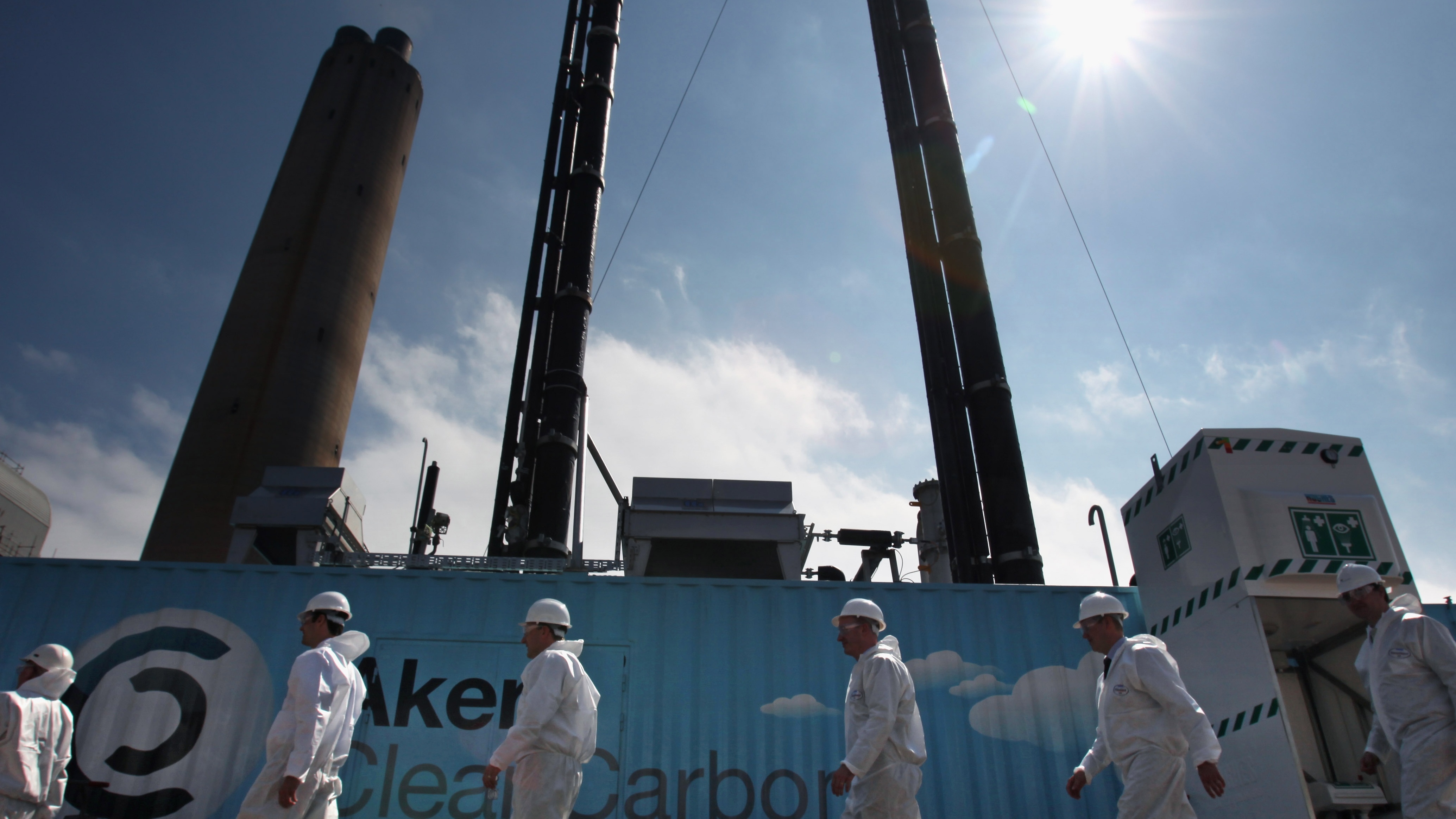What is carbon capture and storage?
The technology could help ‘neutralise’ emissions from power plants, according to UN report on climate change
THE WEEK STAFF
5 APR 2022

A carbon capture facility in Longanet, Scotland
Jeff J Mitchell/Getty Images
Carbon dioxide should be removed from the air and stored underground as part of a raft of urgently needed measures to tackle global warming, a landmark report by UN scientists has advised.
The latest review by the Intergovernmental Panel on Climate Change (IPCC) found that technologies including carbon capture and storage (CCS) were “likely to be necessary” to ensure that any “temperature overshoot” beyond the maximum 1.5C above pre-industrial levels required to limit climate change was “temporary”, The Guardian’s environment correspondent Fiona Harvey reported.
However, the UN body “was also clear that they cannot substitute for ending our dependence on fossil fuels now”, she added.
Capturing carbon
Countries worldwide are “planning far too many new coal-fired power plants, gas installations and other fossil fuel infrastructure to stay within the carbon budgets needed to meet the 1.5C goal”, said The Guardian’s Harvey.
But the UN’s climate change panel said that while the only long-term solution was to phase out coal use, CCS could help to “neutralise emissions from new power plants”.
CCS is the process in which harmful carbon is caught from “concentrated industrial emissions at their source, preventing them from entering the atmosphere at all”, explained The Independent’s environment correspondent Harry Cockburn. The gas is then “liquified” and pumped underground for long-term storage at sites such as depleted oil or gas fields.
CSS has been “discussed for two decades”, said The Guardian’s Harvey, but is “currently only used at a small scale”.
Another similar technology is also being developed. Known as greenhouse gas removal (GGR) or carbon dioxide removal (CDR), the process “involves removing carbon from the atmosphere by chemical means”, wrote Harvey.
According to The Independent’s Cockburn, “there is a consensus that investing and utilising these technologies needs to be rapidly scaled up to have the impact required to keep the targets of the Paris Climate Agreement in sight”.
But critics have suggested “that industries and processes which already emit greenhouse gases could, or already are, using the burgeoning technology as a kind of get-out-of-jail-free card”, he added. Sceptics reportedly fear that businesses and political leaders may “pin their future carbon reduction targets on installing or investing in GGR or CCS technology”.
Fix for the future?
The International Energy Agency (IEA) reported last November that the strengthening of climate goals and new investment incentives was “delivering unprecedented momentum for CCS, with plans for more than 100 new facilities announced in 2021”.
These new technologies “will play an important role in meeting net zero targets, including as one of few solutions to tackle emissions from heavy industry and to remove carbon from the atmosphere”, the Paris-based intergovernmental organisation said.
CSS has also been backed by Robert Gross, professor of energy policy at Imperial College London and director of the UK Energy Research Centre. “We will need not just net zero but to start to remove CO2 from the air,” he told The Guardian.
“We cannot do one instead of the other, but we have reached the point where it is likely that humanity will need to do both to avoid dangerous climate change.”
False dawn
While interest in CCS is growing, some critics have claimed that “most schemes to capture and reuse carbon actually increase emissions”, New Scientist reported.
Research has found that carbon capture technologies typically “emit more carbon than they remove”, said the magazine, which suggested that such “projects, which have attracted billions of dollars in investment, won’t do much to achieve the Paris Agreement’s emission targets”.
Current efforts to roll out CCS are also “dwarfed by the size of the challenge” of combating emissions, said Sky News’ economics and data editor Ed Conway. The UK “is littered with pilot projects that fell by the wayside”, reported Conway, who questioned whether the technology can “fulfil its promise”.
The Independent’s Cockburn pointed out that even the world’s largest “direct air-capture” machine, at Iceland’s Orca plant, “is capable of sucking up just 4,000 tonnes of CO2 a year – a tiny fraction of global emissions, which totalled 31.5 billion tonnes in 2020”.
All the same, many governments “plan to rely heavily on still-developing carbon capture technologies, or tree-planting over massive areas of land, in order to offset emissions”, Time reported.
But the IPCC has repeatedly warned that “they should not be considered a substitute for cutting fossil fuel use”, the magazine added.
THE REALITY IS THAT CCS IS NOT GREEN NOR CLEAN IT IS GOING TO BE USED TO FRACK OLD DRY WELLS SUCH AS IN THE BAKAN SHIELD IN SASKATCHEWAN
https://plawiuk.blogspot.com/2014/10/the-myth-of-carbon-capture-and-storage.html
ALSO SEE https://plawiuk.blogspot.com/search?q=CCS
https://plawiuk.blogspot.com/2014/10/the-myth-of-carbon-capture-and-storage.html
ALSO SEE https://plawiuk.blogspot.com/search?q=CCS
No comments:
Post a Comment